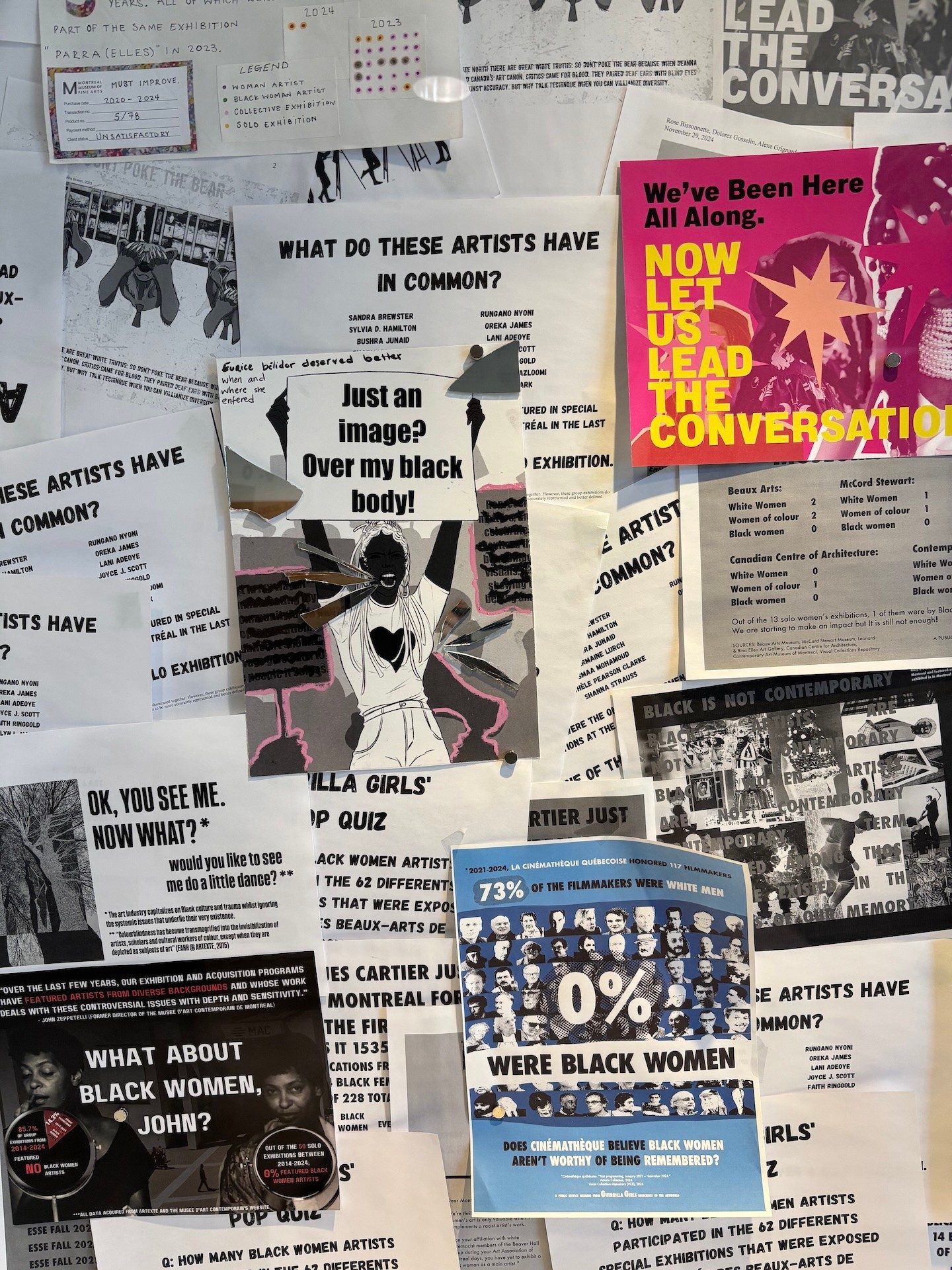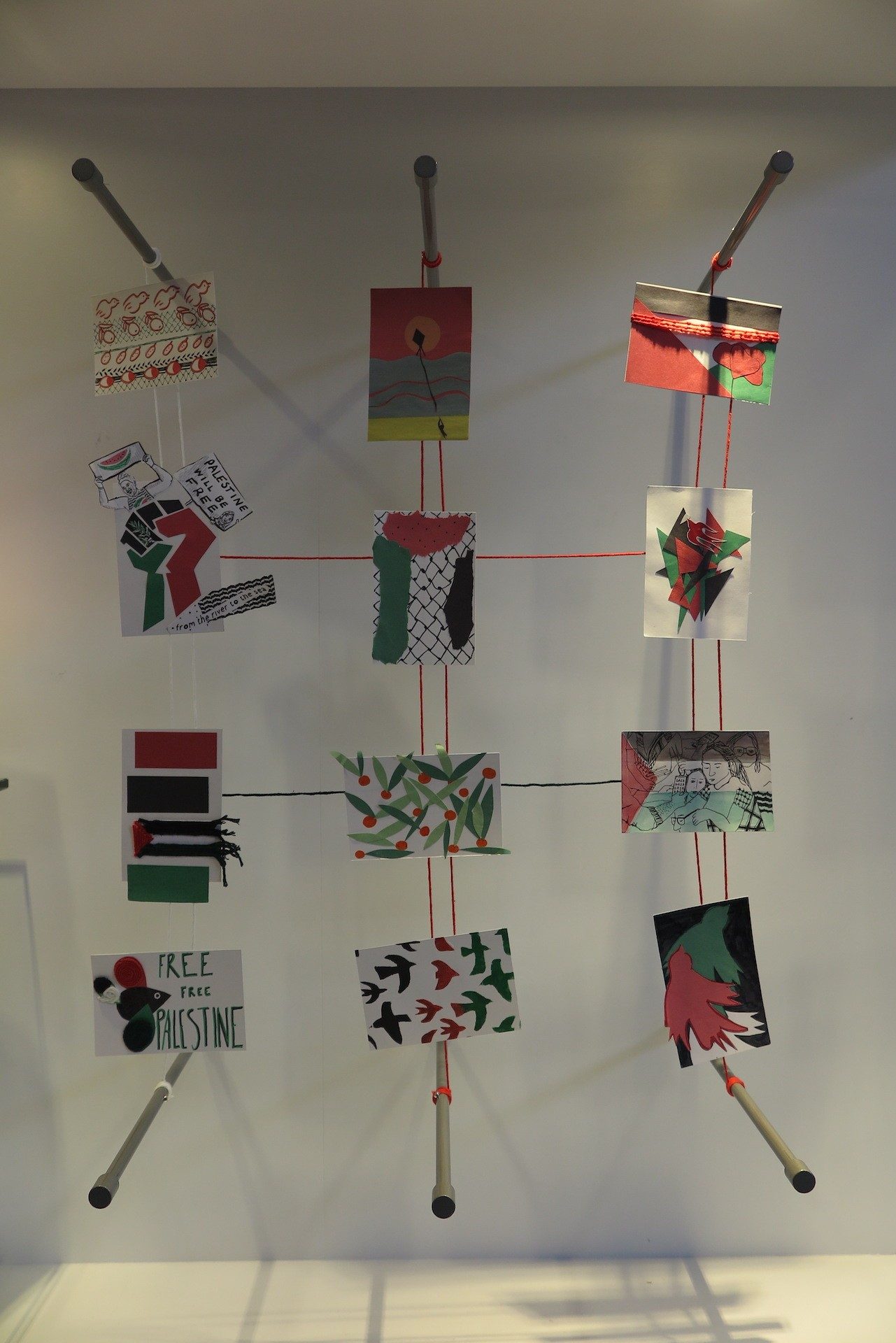VITRINE
The Art History Vitrine hosts month-long exhibitions dedicated to the public expression of art historical research, methods, and objects of study. Since 2006, professors and graduate students have curated installations in this display cabinet on themes as varied as Canadiana, print culture, postcards, as well as architectural drawings and models, often using original works of art by Concordia students.
Current exhibition

In Search of Black Women, A Feminist Art Poster Project
Summer 2025
Canada’s Black visual art and exhibition milieu has largely been led by the work of Black women for several decades. In the Fall semester of 2024, Dr. Joana Joachim offered the course ARTH 381: Feminism in Art. In this course, students considered some of the leading figures in art history as they related to the topic of Black women and art in Canada and beyond. As part of their assignments for this course, students created posters in the style of the Guerrilla Girls with a focus on Black women artists in Montreal art institutions. As part of their research process, students pulled from both the Visual Collections Repository (VCR), here at Concordia University, and from the Artexte collection to research aspects of Black woman’s art history in Montreal.
Previous exhibition

Palestine Will Be Free
Fall 2024
Palestine Will Be Free is an evolving project by Dark Opacities Lab that began as a workshop at the AHGSA conference in February 2024 at Concordia University, transformed into a zine, published with B&D Press in August 2024, and is now on display in the vitrine space of the Department of Art History through late November.
For this project, Dark Opacities Lab went through the vast and rich resource of The Palestine Poster Project, an archive of nearly 20,000 posters in relation to Palestine, composed by nearly 4,000 different artists, and compiled by Dan Walsh. This archive is an invaluable resource in documenting the scale of Palestinian resistance and the place of aesthetics and design. In thinking through the political vernacular of these posters, we are necessarily asked to reckon with the place of visuality and visual culture in the realm of the political. Inspired by The Palestine Poster Project Archives, Dark Opacities Lab asked students and community members to create and contribute postcard-sized art in relation to and in solidarity with Palestinian anti-colonial resistance.
